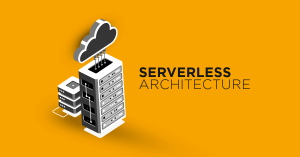As the landscape of technology continues to evolve at a breakneck pace, cloud computing remains at the forefront of innovation. Each year brings new trends that reshape how organizations leverage the cloud, enhancing efficiency, scalability, and sustainability. In 2024, several key trends are expected to dominate the cloud computing space, reflecting the changing needs of
As the landscape of technology continues to evolve at a breakneck pace, cloud computing remains at the forefront of innovation. Each year brings new trends that reshape how organizations leverage the cloud, enhancing efficiency, scalability, and sustainability. In 2024, several key trends are expected to dominate the cloud computing space, reflecting the changing needs of businesses and advancements in technology. This article explores the top five cloud computing trends for 2024, their benefits, real-world examples, and case studies.
1. AI as a Service (AIaaS)
Overview
AI as a Service (AIaaS) is rapidly gaining traction as businesses look to integrate artificial intelligence capabilities without the burden of managing complex infrastructures. This trend allows companies to utilize pre-built AI models, tools, and APIs hosted on cloud platforms.
Benefits
- Cost-Effectiveness: Businesses can access powerful AI capabilities without investing in expensive hardware and software.
- Accessibility: Even organizations without specialized AI expertise can implement AI functionalities seamlessly.
- Scalability: AIaaS solutions can easily scale according to the needs of the business, providing flexibility.
Example
Microsoft Azure AI provides businesses with a comprehensive suite of AI services, including natural language processing and machine learning models. Companies can easily integrate these services into their applications, improving customer engagement and operational efficiency.
Case Study
Coca-Cola utilized AIaaS from Google Cloud to analyze consumer data and enhance its marketing strategies. By leveraging AI insights, the company improved its product offerings and customer experience, resulting in a significant increase in sales.
2. Hybrid and Multi-Cloud Strategies
Overview
The hybrid and multi-cloud approach combines public and private cloud services, offering enterprises increased flexibility and reduced reliance on a single vendor. This trend is gaining momentum as businesses recognize the need for versatile cloud solutions.
Benefits
- Portability: Organizations can move workloads between different cloud environments, optimizing resource use.
- Risk Mitigation: Reduces the risk of vendor lock-in, providing more options to choose from.
- Enhanced Security: By using both public and private clouds, businesses can better manage sensitive data while enjoying the benefits of public cloud resources.
Example
Netflix employs a hybrid cloud model to deliver its streaming service. By utilizing both its own data centers and third-party cloud services, Netflix ensures optimal performance and availability, even during peak traffic times.
Case Study
General Electric (GE) adopted a multi-cloud strategy, leveraging AWS, Microsoft Azure, and Google Cloud to manage its extensive data analytics needs. This approach allowed GE to enhance its operational efficiency while ensuring data redundancy and disaster recovery.
3. Edge AI Computing

Image by Yandex.com
Overview
Edge AI computing is an emerging trend that brings computation and data storage closer to the source of data generation. This shift reduces latency and enables real-time analysis and decision-making, making it particularly valuable for applications requiring immediate responses.
Benefits
- Reduced Latency: Minimizes delays in data processing, enhancing the user experience.
- Improved Performance: Enables real-time data analysis, critical for industries such as healthcare and manufacturing.
- Bandwidth Efficiency: Reduces the amount of data transferred to central servers, optimizing network usage.
Example
NVIDIA‘s edge computing solutions enable real-time AI analysis in various sectors, including healthcare, where immediate insights can be crucial for patient care. By processing data at the edge, healthcare providers can make quicker decisions and improve outcomes.
Case Study
Siemens implemented edge AI in its manufacturing processes to monitor equipment performance in real time. By analyzing data on-site, Siemens reduced downtime and increased operational efficiency, demonstrating the practical benefits of edge computing.
4. Sustainable Cloud Computing
Overview
Sustainable cloud computing is gaining importance as organizations recognize their environmental impact. The ICT sector accounts for a significant percentage of global greenhouse gas emissions, prompting businesses to adopt greener practices.
Benefits
- Environmental Responsibility: Companies can reduce their carbon footprint and promote sustainability.
- Cost Savings: Efficient resource management often leads to lower operational costs.
- Enhanced Reputation: Businesses that prioritize sustainability can attract eco-conscious consumers and partners.
Example
Amazon Web Services (AWS) has committed to achieving 100% renewable energy usage by 2025. This commitment reflects the growing trend of businesses striving for sustainable cloud practices while meeting their operational needs.
Case Study
Google Cloud implemented energy-efficient data centers that utilize advanced cooling technologies and renewable energy sources. As a result, Google has significantly reduced its energy consumption and greenhouse gas emissions, setting a benchmark for sustainable practices in the cloud.
5. Serverless Computing

Image by Yandex.com
Overview
Serverless computing is an architectural paradigm that allows developers to build and run applications without managing servers. This trend is gaining momentum as it simplifies the deployment process, enabling faster time-to-market for applications.
Benefits
- Reduced Management Overhead: Developers can focus on writing code rather than managing infrastructure.
- Cost Efficiency: Businesses only pay for the computing resources they use, eliminating costs associated with idle server time.
- Scalability: Automatically scales applications based on demand, ensuring optimal performance.
Example
AWS Lambda is a leading serverless computing service that allows developers to run code in response to events without provisioning or managing servers. This flexibility has made it popular among startups and enterprises alike.
Case Study
Netflix also employs serverless computing to handle specific workloads, such as transcoding videos. By using AWS Lambda, Netflix can process vast amounts of data without worrying about underlying server management, allowing them to focus on delivering high-quality content to users.
Conclusion
As we delve into 2024, the trends in cloud computing reflect the industry’s adaptability and commitment to innovation. From the rise of AI as a Service and hybrid cloud strategies to the growing importance of sustainable practices and serverless computing, these trends are reshaping how businesses operate in the digital age. By embracing these changes, organizations can enhance their efficiency, improve customer experiences, and contribute to a more sustainable future. Businesses that adapt and leverage these trends will find themselves well-positioned to thrive in the competitive landscape of tomorrow.
















